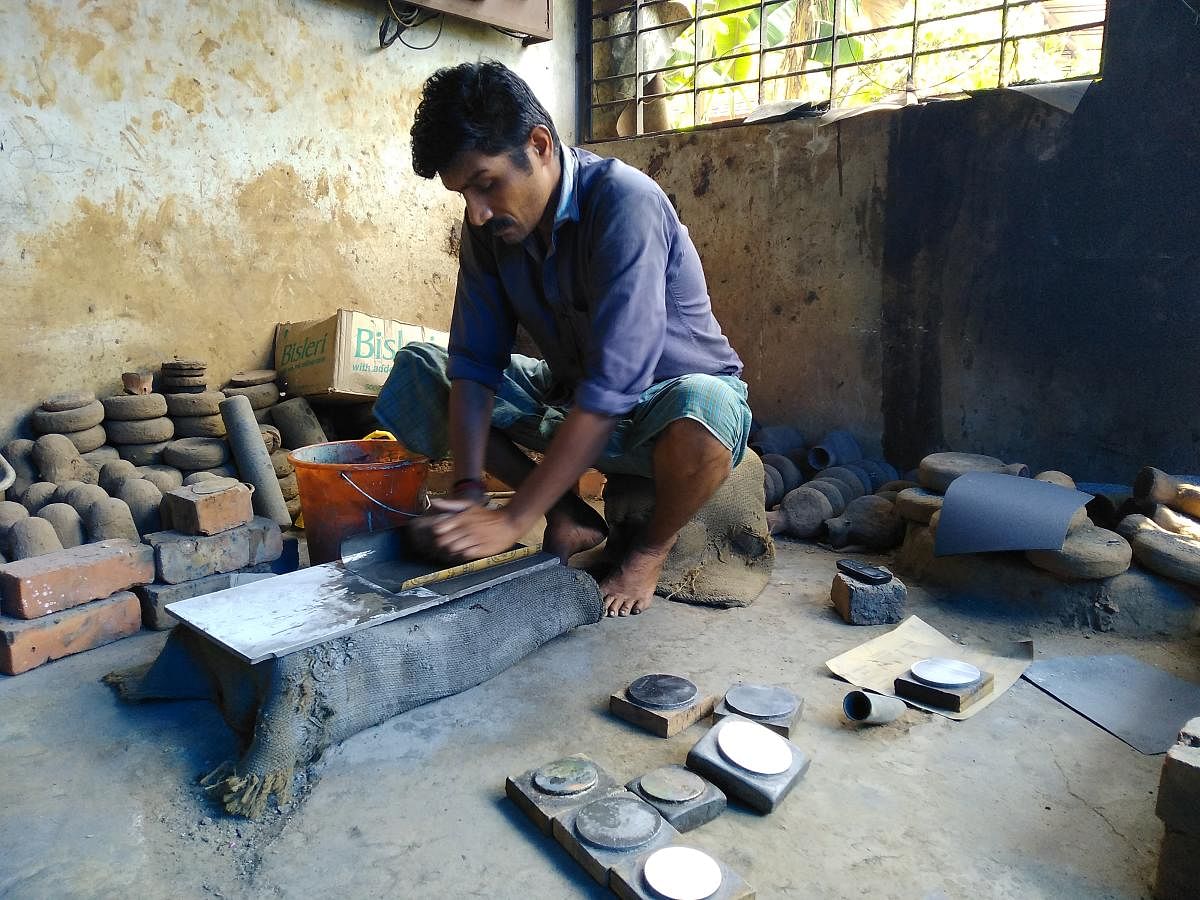
As Rajeev, a third-generation mirror-making artisan, looks into a just-finished iconic Aranmula Kannadi, what reflects is not just his face, but also the revival of a traditional industry that was ravaged by the floods of August 2018 in Kerala.
The 25-odd Aranmula Kannadi-making units, calls ‘alas’, in the vicinity of Aranmula Parthasarathy Temple on the banks of River Pamba, about 20 km from Pathanamthitta in South Kerala, submerged in the floods.
Despite little support from the government, the will and vision of the industry helped it bounce back to normalcy within six months.
The iconic Aranmula Kannadi attains a sacred place in Kerala society and finds an inevitable place in marriage rituals and offerings to God. The positive energy that the Aranmula Kannadi is said to emanate makes it a much-sought-after gift for auspicious occasions like house-warming.
By Birth
Considered to have its origin in Kerala in the 18th century, it’s a secret combination of the metal alloy mix. It became the first craft product to get a geographical indication registration in India in 2004. The price of the Aranmula Kannadi ranges between Rs 1,000 and one lakh depending on the size. The most popular design is the Valkannadi model, which bears a handle.
Of all the alas situated within the radius of about one kilometre of Parthasarathy Temple, 14 went under the floods for four days. Water level at some workshops even went up to 10 feet. Of the 18 steps of the temple, 15 were underwater for a couple of days, recollects Rajeev, whose ala faces the temple.
As the flood waters reclined, the sight was heart-shattering. The alas and tools were covered with sticky mud and weeds. Hundreds of moulds were damaged. A good quantity of raw materials like tin and copper was lost irrecoverably. Hundreds of finished Aranmula Kannadi had scratches.
“The industry came to a standstill for two months,” says K P Ashokan, President of Viswabrahmana Aranmula Metal Mirror Nirman Society.
It would take two weeks for the metal alloy combination, mainly comprising tin and copper, to become a Aranmula Kannadi. About 10 to 15 mirrors of different sizes were made in a batch by four or five workers.” For the government, only material loss of the units counted. But, there was job loss, the loss of time and material required for making moulds, and the loss of the irrecoverably damaged mirrors. More important was the business loss as Aranmula Kannadis sales were brisk during Onam.
“The floods occurred just before the festival, when each unit had huge stocks. Each unit suffered an estimate loss ranging from Rs 10 to 15 lakh,” adds Ashokan.
But financial help poured in from voluntary groups from within the country as well as abroad. It was a boon for the revival of this industry.
“Media coverage also brought us help in the form of money from abroad and bulk orders,” said Hari, a native who has been helping the industry get back on its foot.
The main issue the artisans face is the unavailability of mud. Mud from the paddy fields of Aranmula was used for making the moulds. It has a high adhesive content that prevents cracks in the moulds. But after the floods, weeds and dirt from the locality covered the mud in the paddy fields.
The arrangement
“Now we collect mud from other nearby fields in places like Mannar, about 20 km from Aranmula, and mix flax threads with it by grinding so that the mud gets an adhesive texture,” explains Ashokan.
Apart from the who’s who of India, Aranmula Kannadis have been presented to international personalities too, like former US president Barack Obama.
“There are customers who buy it after testing the positive energy that emanates from it using techniques like hanging a gold ring close to the mirror and see it rotating,” says Rajeev, who has been making this iconic mirror for two decades now.